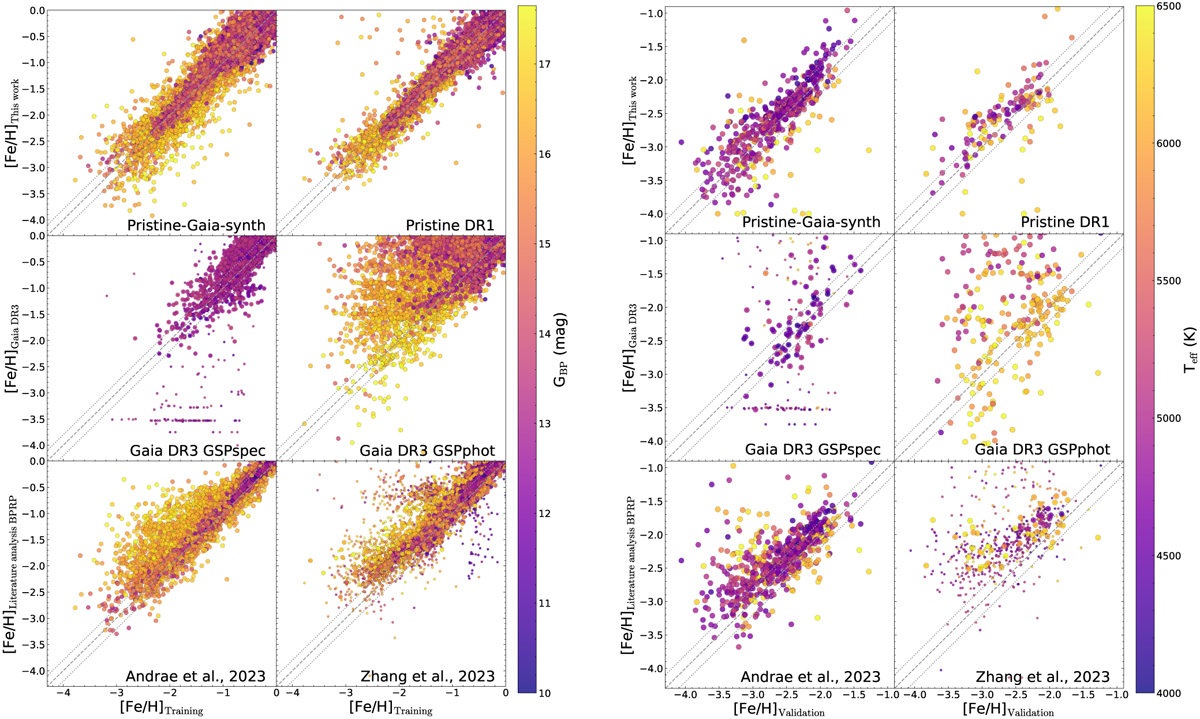Fig. 16

Download original image
Comparison of various metallicity catalogues based on Gaia DR3 with the giant stars in the training (left, see text for the construction of this sample) and with the validation sample at lower metallicities (right, see text for details) and their spectroscopic metallicities. After the comparison with the Pristine-Gaia synthetic catalogue, and the Pristine DR1 catalogue, the panels show the comparisons for the Gaia GSP-Spec metallicities based on the Gaia RVS spectra (Recio-Blanco et al. 2023, smaller circles correspond to stars flagged as unreliable in this catalogue, following the same criteria discussed in their Section 10.5 and represented in their Figure 26), the Gaia GSP-Phot catalogue based on the BP/RP information (Andrae et al. 2023a), the XGBoost algorithm (Andrae et al. 2023b) and the Zhang et al. (2023, smaller circles correspond to stars flagged to have unreliable metallicities) catalogue that use the BP/RP information and some additional non-Gaia photometry. The color encodes the magnitude of a star in the left-hand set of panels and their temperature in the right-hand set of panels. The dashed line corresponds to the 1-to-1 line and the dotted lines represent offsets of 0.2 dex.
Current usage metrics show cumulative count of Article Views (full-text article views including HTML views, PDF and ePub downloads, according to the available data) and Abstracts Views on Vision4Press platform.
Data correspond to usage on the plateform after 2015. The current usage metrics is available 48-96 hours after online publication and is updated daily on week days.
Initial download of the metrics may take a while.


